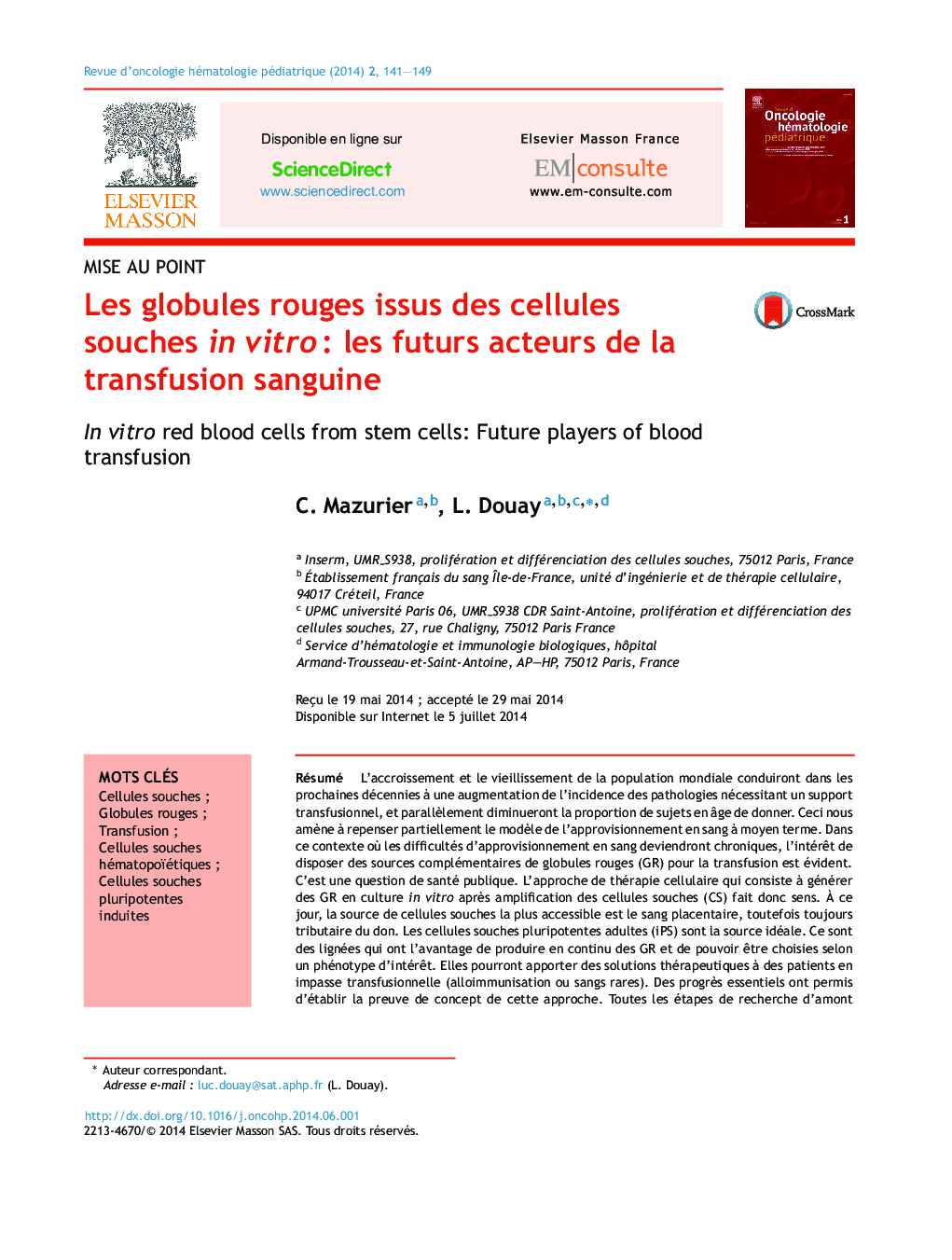| Article ID | Journal | Published Year | Pages | File Type |
|---|---|---|---|---|
| 3333306 | Revue d'Oncologie Hématologie Pédiatrique | 2014 | 9 Pages |
Abstract
Increase and aging of the world population in the next decades will lead to the magnification of the incidence of pathologies requiring transfusion support, and in parallel to a decrease of the proportion of potential donors. This imposes to partly rethink the current model of blood supply for the mid-term. In this context, difficulties to collect blood supplies will become chronic. We will therefore need to dispose of complementary sources of red blood cells (RBC) for transfusion. It is a public health question. The cell therapy approach which consists of generating cultured RBC (cRBC) in vitro after amplification of stem cells (SC) therefore makes sense. To date, the most accessible source of stem cells is cord blood, but still relies on donations. Induced pluripotent adult stem cells (iPS) are the ideal source. These cell lines present the advantage to allow a continuous production and can be chosen according to a phenotype of interest. They may provide treatments to patients in situation of impossible transfusion (alloimmunizated patients, rare phenotypes). Essential progress have allowed to establish the proof of concept of the approach. All steps of upstream research were successfully achieved, including the demonstration of the feasibility of injection into human. This leads us to believe that RBC generated in vitro from stem cells will be the future players of blood transfusion.
Keywords
Related Topics
Life Sciences
Immunology and Microbiology
Immunology
Authors
C. Mazurier, L. Douay,
